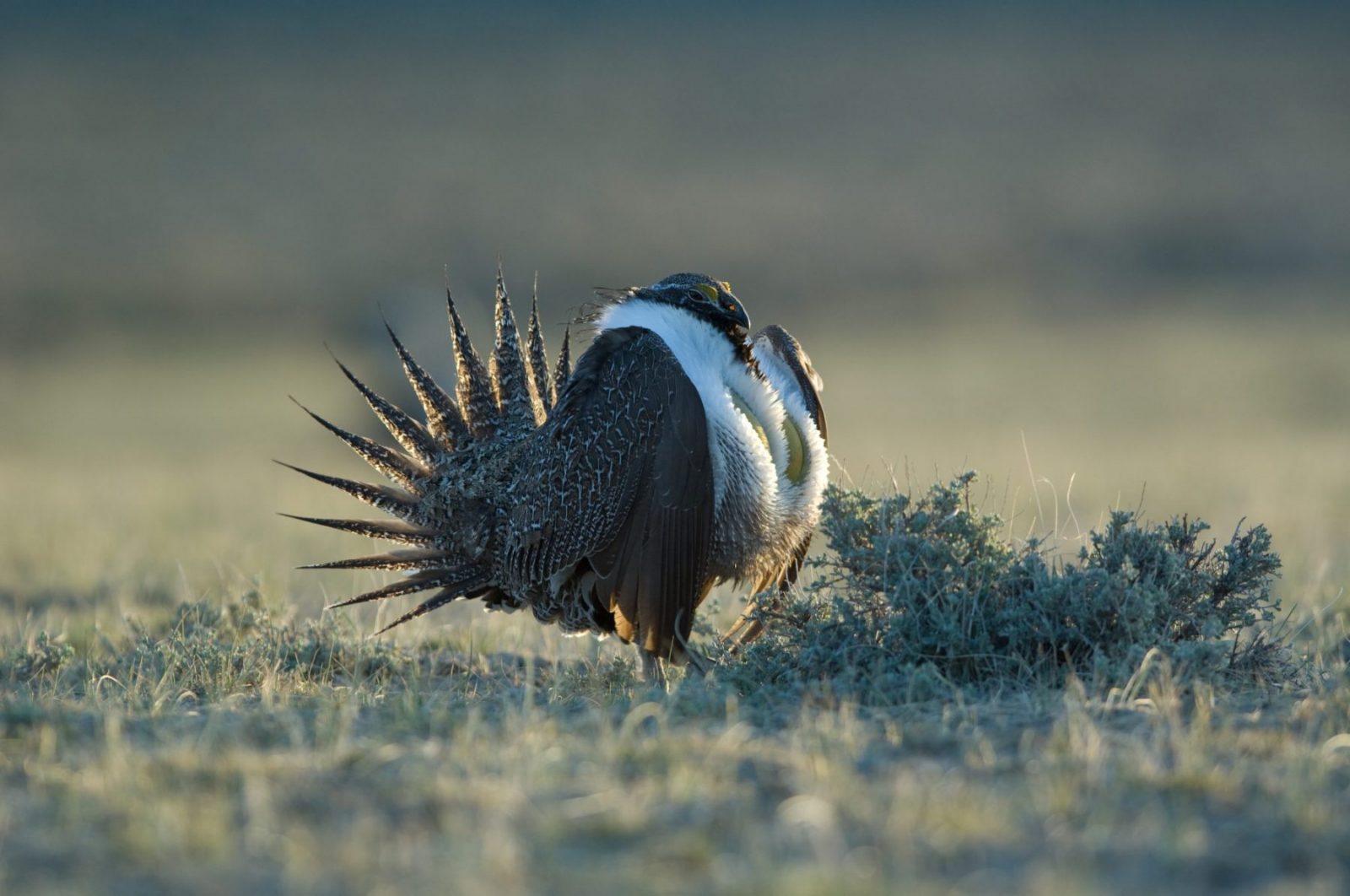A historic, West-wide effort to protect the imperiled Greater sage-grouse is under threat by the Trump administration—even though Wyoming Governor Matt Mead doesn’t want Washington to meddle with key features of the science-based plan.
The federal plan for protecting sage-grouse in the West, finalized during the previous presidential administration, was largely based on Wyoming’s home-grown and collaborative strategy to protect “core” sage-grouse habitat—the places the birds rely on to perform their iconic mating ritual and raise their young.
But Secretary of the Interior Ryan Zinke has announced that his agency will re-open the plan in order to consider an unsound, population-based strategy rather than a habitat-based approach.
But the science is clear on this point: A population-based approach to managing sage-grouse would absolutely not work. When it comes to the viability of the species, it all comes down to habitat.
“That (would be) the end of sage-grouse,” Brian Rutledge, director of the National Audubon Society’s Sagebrush Ecosystem Initiative recently told the Casper Star-Tribune. “I am counting on the governors to not let this happen.”
Wyoming’s plan is “solid and should be allowed to work,” Governor Mead said in a recent media release.
“I am concerned that the [Trump administration’s] recommendations place more focus on population targets and captive breeding,” Mead said. “Wyoming will continue to rely on science and scientists to manage the species. I will continue to work with Secretary Zinke, state and local stakeholders on this issue.”
Wyoming’s Groundbreaking Plan to Save Sage-grouse
Two successive Wyoming governors—Dave Freudenthal, a Democrat, and Mead, a Republican—convened diverse teams of stakeholders—including representatives from the energy industries, wildlife advocates, agriculture, electrical utilities, mining, and state and federal resource management agencies—to create a plan with one overarching goal: conserve the most important habitat in order to avoid the need to list the sage-grouse as a threatened species under the Endangered Species Act.
The resulting strategy—to protect sage-grouse core habitat and breeding areas—was informed by the best and most up-to-date science, and has been revised as new science has become available.
The Wyoming Outdoor Council has long been a supporter of this core area strategy, because we believe it is the bird’s best bet for long-term viability.
Not only do the current plans significantly reduce the threats to sage-grouse, they also protect more than 350 other Western species that depend on the same sagebrush habitat. The plans also serve ranchers, energy developers, and people who love the outdoors, as the Bureau of Land Management and U.S. Forest Service have been able to implement sage-grouse conservation while still managing these landscapes for the benefit of millions of Americans who rely on them for their livelihoods and quality of life.
These plans are the largest land conservation effort in U.S. history. They were locally driven collaborative efforts, and are a testament to the ability of stakeholders to roll up their sleeves, put politics aside, and work together to find answers. The message we need to send to Secretary Zinke is clear: collaborative conservation works, and it’s the only way we are going to find lasting solutions to our most complicated ecological challenges.
The BLM is offering two opportunities for public input. First, click below to comment before the December 1 deadline.
Let the agency know that you support these historic, science-based management plans and don’t want to see any changes. In your message, be sure to introduce yourself: say where you live and the values you have as someone who lives, works, and plays in the West. Personal stories and unique messages help ensure your message will be read and taken into consideration.
And if you live in Wyoming, please consider attending either of two public meetings hosted by the BLM next month:
MONDAY, NOVEMBER 6
4–7 p.m.
Little America Hotel & Conference Center
2800 W Lincolnway
Cheyenne, WY 82009
WEDNESDAY, NOVEMBER 8
4–7 p.m.
BLM Pinedale Field Office
1625 W Pine Street
Pinedale, WY 82941
For more information about the BLM meetings, click here.
Dan
Heilig
Senior Conservation Advocate
Staff

